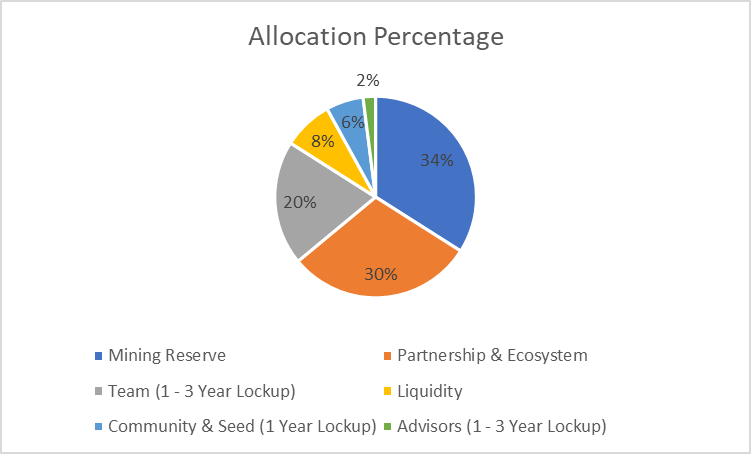The best or proper tokenomics for a blockchain token will vary depending on the specific project and its goals.
However, there are some general principles that can be applied to most cases.
One important principle is to have a fair and transparent token distribution.
The tokens should be distributed in a way that benefits all stakeholders, including the team, investors, and community.

Common Token Distribution Models
- Team allocation
This allocation is typically given to the team members who are working on the project. It should be enough to incentivize them to continue working on the project and to reward them for their efforts.
- Investor allocation
This allocation is given to investors who have provided funding for the project. It should be enough to compensate them for their investment and to incentivize them to continue supporting the project.
- Community allocation
This allocation is given to the community members who are using and supporting the project. It can be used to incentivize participation, to reward contributions, and to build a strong community around the project.
Another important principle is to have a well-defined supply schedule.
The supply schedule should be designed to ensure that the token has a sustainable value and that it is not subject to inflation.\
Common Supply Schedules
- Fixed supply
This supply schedule keeps the total supply of tokens constant. This can help to maintain the value of the token over time.
- Inflating supply
This supply schedule gradually increases the total supply of tokens over time. This can be used to incentivize spending and to reduce the value of the token over time.
- Deflating supply
This supply schedule gradually decreases the total supply of tokens over time. This can be used to incentivize saving and to increase the value of the token over time.
Other Consideration
in addition to these general principles, there are a number of other factors that can be considered when designing tokenomics, such as the following:
- Token utility: The token should have a clear and compelling utility. This will help to drive demand for the token and to support its value.
- Token governance: The token should be used to govern the project. This will give token holders a say in the future direction of the project and will help to ensure that the project is aligned with the interests of the community.
- Token marketing: The token should be marketed effectively to attract users and investors. This will help to increase the demand for the token and to support its value.
By following these principles and considering these factors, project teams can design a tokenomics model that will help them to achieve their goals and to create a successful blockchain project.
General Fair Token Allocation and Supply Schedule
Token allocation:
-Team: 20%
-Investors: 30%
-Community: 50%Supply schedule (This is just example showing gradual token supply)
-Year 1: 100 million
-Year 2: 120 million
-Year 3: 140 million
-Year 4: 160 million
-Year 5: 180 million
This token allocation and supply schedule is fair and transparent, and it incentivizes all stakeholders to participate in and support the project.
The token utility is clear and compelling, and the token governance model gives token holders a say in the future direction of the project.
The token marketing plan is also effective, and it is likely to attract users and investors to the project.
Most Common Tokenomics
The most common tokenomics model is a model in which the majority of the tokens are allocated to the team and investors, with a smaller allocation for the community.
This type of model is often used by projects that are early in their development stage and that need to raise capital to fund their development.
However, there is a growing trend towards more equitable tokenomics models, such as the model described above. This is because the community is playing an increasingly important role in the development and success of blockchain projects.
The main difference between the generally best and most common tokenomics models is that the generally best model allocates a larger share of tokens to the community. This is because the community is essential to the success of a blockchain project, and it is important to incentivize participation and support.
And generally best tokenomics model has a more gradual supply schedule. This helps to maintain the value of the token over time and to reduce the risk of inflation.